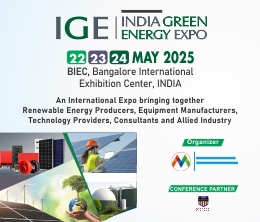Middle East Polymer Concrete Market (2025-2031) | Size, Growth, Value, Share, Revenue, Outlook, Trends, Industry, Forecast, Companies & Analysis
Market Forecast by Countries (Saudi Arabia, UAE, Qatar, Kuwait, Oman, Bahrain and Turkey), By Class (PMC, PC, PIC), By Type (Epoxy, Polyester, Latex), By Application (Containments, Pump Bases, Wastewater Containers) And Competitive Landscape
| Product Code: ETC4618992 | Publication Date: Jul 2023 | Updated Date: Dec 2024 | Product Type: Report | |
| Publisher: 6Wresearch | No. of Pages: 200 | No. of Figures: 90 | No. of Tables: 29 | |
Middle East Polymer Concrete Market Highlights
| Report Name | Middle East Polymer Concrete Market |
| Forecast period | 2025-2031 |
| Forecast Size | USD 250 million by 2031 |
| CAGR | 8.6% |
| Growing Sector | Construction |
Topics Covered in the Middle East Polymer Concrete Market Report
The Middle East Polymer Concrete market report thoroughly covers the market by class, by type, by application, by countries and competitive Landscape. The report provides an unbiased and detailed analysis of the on-going market trends, opportunities/high growth areas, and market drivers which would help the stakeholders to devise and align their market strategies according to the current and future market dynamics.
Middle East Polymer Concrete Market Size & Analysis
Middle East Polymer Concrete Market was valued at USD 160 million and is expected to reach USD 250 million, growing at a CAGR of around 8.6% from 2025 to 2031. This growth is attributed to increasing infrastructure development, advancements in construction technology, and rising demand for durable, chemical-resistant materials across the region.
Middle East Polymer Concrete Market Synopsis
The Middle East polymer concrete market has witnessed a substantial growth in recent years, driven by the region's booming construction industry and the growing demand for durable and sustainable building materials. Polymer concrete, known for its enhanced properties such as high tensile strength, chemical resistance, and minimal maintenance requirements, has become increasingly popular in various construction applications including water containers, flooring blocks, and repair works. This growth is further supported by the region's ongoing infrastructure development projects, such as the expansion of transportation networks and the construction of new residential and commercial buildings, necessitating the use of advanced materials that offer longevity and resilience in harsh environmental conditions. Further, one notable trend in the Middle East polymer concrete market is the increasing incorporation of eco-friendly and sustainable practices. Manufacturers are exploring the use of recycled materials and developing new formulations that reduce carbon footprints, responding to the global demand for greener construction materials. Additionally, technological advancements in polymer concrete, such as the enhancement of its thermal and electrical conductive properties, are opening up new applications in energy conservation and infrastructure safety. This aligns with the region's initiatives towards sustainable development and innovation in construction techniques, further propelling the market's growth.
According to 6Wresearch, Middle East Polymer Concrete market size is projected to grow at a CAGR of 8.6% during 2025-2031. The growth of the Middle East polymer concrete market is significantly propelled by several key drivers such as the escalating construction activities fueled by economic diversification efforts, heightened awareness and regulatory support for sustainable building practices, and technological innovations enhancing polymer concrete’s attributes. Economic diversification strategies are leading to massive investments in infrastructure and tourism projects, creating a robust demand for durable and efficient construction materials like polymer concrete. Concurrently, the shift toward sustainability is urging manufacturers to develop eco-friendly products, aligning with global and regional sustainability goals. Furthermore, advancements in material science are not only improving the performance characteristics of polymer concrete but are also unlocking new applications, thus broadening the market scope. These factors collectively contribute to the dynamic expansion of the polymer concrete market in the region.
Government Initiatives Introduced in the Middle East Polymer Concrete Market
Government initiatives play a pivotal role in supporting the polymer concrete market's growth in the Middle East. Regulatory bodies are increasingly drafting and enforcing standards and policies aimed at promoting sustainable construction practices. For instance, green building regulations that mandate the use of environmentally friendly materials are incentivizing companies to invest in research and development of sustainable polymer concrete solutions. Further, these initiatives have boosted the Middle East Polymer Concrete Market Share. Additionally, governments are launching substantial infrastructure projects as part of their economic diversification plans, directly leading to a surge in the demand for durable and innovative construction materials. These strategic moves not only facilitate the market's expansion but also align with broader environmental and economic objectives, underscoring the critical influence of governmental actions on industry trends.
Key Players in the Middle East Polymer Concrete Market
Key players in the polymer concrete market in the Middle East include BASF SE, Sika AG, Mapei SpA, Fosroc International Ltd, and Kwik Bond Polymers. These companies are at the forefront of innovation and sustainability in the construction materials sector, offering a wide range of polymer concrete products that cater to the demanding requirements of modern infrastructure projects. Moreover, the organizations grasp massive Middle East Polymer Concrete Market Revenues. Further, their commitment to research and development has led to the creation of high-quality, durable, and eco-friendly polymer concrete solutions, positioning them as leading suppliers in the region's rapidly expanding construction market.
Future Insights of the Middle East Polymer Concrete Market
Looking ahead, the polymer concrete market in the Middle East is poised for substantial growth, driven by relentless innovation and a growing emphasis on sustainability. The integration of advanced technologies, such as nanotechnology and smart materials, is expected to usher in a new era of polymer concrete with enhanced properties—increased durability, reduced environmental impact, and improved cost-effectiveness. Furthermore, the escalating demand for green buildings and sustainable urban development is likely to open new avenues for the application of polymer concrete, reinforcing its position as a material of choice in future construction projects. Amidst these developments, companies that continue to invest in research, prioritize eco-friendly practices, and adapt to evolving market demands will likely emerge as leaders in the burgeoning polymer concrete landscape in the Middle East.
Market Analysis by Type
According to Ravi Bhandari, Research Head, 6Wresearch, within the polymer concrete market, a variety of product types are available, each offering distinct advantages in terms of durability, setting time, and environmental resistance. Epoxy: known for its superior strength and longevity, epoxy-based polymer concrete is a popular choice for heavy-duty applications, offering excellent adhesion and chemical resistance. Further, polyester: this type of polymer concrete provides rapid setting times and high strength, making it ideal for quick-turnaround projects where time is of the essence. Moreover, latex: with enhanced water resistance and flexibility, latex-modified polymer concrete is suited for applications requiring durable, water-tight structures, such as bridges and marine facilities.
Market Analysis by Countries
In the Middle East, key countries such as Saudi Arabia, the UAE, Qatar, Kuwait, and Oman are at the forefront of adopting and integrating polymer concrete solutions within their construction sectors. Saudi Arabia, with its ambitious vision for infrastructure and urban development, is a significant market driver, closely followed by the UAE, known for its innovative architectural projects and green building initiatives. Qatar's focus on sustainable infrastructure, especially in preparation for international events, positions it as a vital player. Similarly, Kuwait and Oman are steadily recognizing the benefits of polymer concrete, incorporating it into various projects to enhance durability and environmental sustainability. Together, these countries are pivotal in shaping the polymer concrete market landscape in the region.
Key Attractiveness of the Report
- 10 Years Market Numbers.
- Historical Data Starting from 2021 to 2024.
- Base Year: 2024.
- Forecast Data until 2031.
- Key Performance Indicators Impacting the Market.
- Major Upcoming Developments and Projects.
Key Highlights of the Report:
- Middle East Polymer Concrete Market Overview
- Middle East Polymer Concrete Market Outlook
- Middle East Polymer Concrete Market Forecast
- Market Size of Middle East Polymer Concrete Market, 2024
- Forecast of Middle East Polymer Concrete Market, 2031
- Historical Data and Forecast of Middle East Polymer Concrete Revenues & Volume for the Period 2021-2031
- Middle East Polymer Concrete Market Trend Evolution
- Middle East Polymer Concrete Market Drivers and Challenges
- Middle East Polymer Concrete Price Trends
- Middle East Polymer Concrete Porter's Five Forces
- Middle East Polymer Concrete Industry Life Cycle
- Historical Data and Forecast of Middle East Polymer Concrete Market Revenues & Volume By Class for the Period 2021-2031
- Historical Data and Forecast of Middle East Polymer Concrete Market Revenues & Volume By PMC for the Period 2021-2031
- Historical Data and Forecast of Middle East Polymer Concrete Market Revenues & Volume By PC for the Period 2021-2031
- Historical Data and Forecast of Middle East Polymer Concrete Market Revenues & Volume By PIC for the Period 2021-2031
- Historical Data and Forecast of Saudi Arabia Polymer Concrete Market Revenues & Volume By Class for the Period 2021-2031
- Historical Data and Forecast of Saudi Arabia Polymer Concrete Market Revenues & Volume By PMC for the Period 2021-2031
- Historical Data and Forecast of Saudi Arabia Polymer Concrete Market Revenues & Volume By PC for the Period 2021-2031
- Historical Data and Forecast of Saudi Arabia Polymer Concrete Market Revenues & Volume By PIC for the Period 2021-2031
- Historical Data and Forecast of UAE Polymer Concrete Market Revenues & Volume By Class for the Period 2021-2031
- Historical Data and Forecast of UAE Polymer Concrete Market Revenues & Volume By PMC for the Period 2021-2031
- Historical Data and Forecast of UAE Polymer Concrete Market Revenues & Volume By PC for the Period 2021-2031
- Historical Data and Forecast of UAE Polymer Concrete Market Revenues & Volume By PIC for the Period 2021-2031
- Historical Data and Forecast of Qatar Polymer Concrete Market Revenues & Volume By Class for the Period 2021-2031
- Historical Data and Forecast of Qatar Polymer Concrete Market Revenues & Volume By PMC for the Period 2021-2031
- Historical Data and Forecast of Qatar Polymer Concrete Market Revenues & Volume By PC for the Period 2021-2031
- Historical Data and Forecast of Qatar Polymer Concrete Market Revenues & Volume By PIC for the Period 2021-2031
- Historical Data and Forecast of Kuwait Polymer Concrete Market Revenues & Volume By Class for the Period 2021-2031
- Historical Data and Forecast of Kuwait Polymer Concrete Market Revenues & Volume By PMC for the Period 2021-2031
- Historical Data and Forecast of Kuwait Polymer Concrete Market Revenues & Volume By PC for the Period 2021-2031
- Historical Data and Forecast of Kuwait Polymer Concrete Market Revenues & Volume By PIC for the Period 2021-2031
- Historical Data and Forecast of Oman Polymer Concrete Market Revenues & Volume By Class for the Period 2021-2031
- Historical Data and Forecast of Oman Polymer Concrete Market Revenues & Volume By PMC for the Period 2021-2031
- Historical Data and Forecast of Oman Polymer Concrete Market Revenues & Volume By PC for the Period 2021-2031
- Historical Data and Forecast of Oman Polymer Concrete Market Revenues & Volume By PIC for the Period 2021-2031
- Historical Data and Forecast of Bahrain Polymer Concrete Market Revenues & Volume By Class for the Period 2021-2031
- Historical Data and Forecast of Bahrain Polymer Concrete Market Revenues & Volume By PMC for the Period 2021-2031
- Historical Data and Forecast of Bahrain Polymer Concrete Market Revenues & Volume By PC for the Period 2021-2031
- Historical Data and Forecast of Bahrain Polymer Concrete Market Revenues & Volume By PIC for the Period 2021-2031
- Historical Data and Forecast of Turkey Polymer Concrete Market Revenues & Volume By Class for the Period 2021-2031
- Historical Data and Forecast of Turkey Polymer Concrete Market Revenues & Volume By PMC for the Period 2021-2031
- Historical Data and Forecast of Turkey Polymer Concrete Market Revenues & Volume By PC for the Period 2021-2031
- Historical Data and Forecast of Turkey Polymer Concrete Market Revenues & Volume By PIC for the Period 2021-2031
- Historical Data and Forecast of Rest of Middle East Polymer Concrete Market Revenues & Volume By Class for the Period 2021-2031
- Historical Data and Forecast of Rest of Middle East Polymer Concrete Market Revenues & Volume By PMC for the Period 2021-2031
- Historical Data and Forecast of Rest of Middle East Polymer Concrete Market Revenues & Volume By PC for the Period 2021-2031
- Historical Data and Forecast of Rest of Middle East Polymer Concrete Market Revenues & Volume By PIC for the Period 2021-2031
- Historical Data and Forecast of Middle East Polymer Concrete Market Revenues & Volume By Type for the Period 2021-2031
- Historical Data and Forecast of Middle East Polymer Concrete Market Revenues & Volume By Epoxy for the Period 2021-2031
- Historical Data and Forecast of Middle East Polymer Concrete Market Revenues & Volume By Polyester for the Period 2021-2031
- Historical Data and Forecast of Middle East Polymer Concrete Market Revenues & Volume By Latex for the Period 2021-2031
- Historical Data and Forecast of Saudi Arabia Polymer Concrete Market Revenues & Volume By Type for the Period 2021-2031
- Historical Data and Forecast of Saudi Arabia Polymer Concrete Market Revenues & Volume By Epoxy for the Period 2021-2031
- Historical Data and Forecast of Saudi Arabia Polymer Concrete Market Revenues & Volume By Polyester for the Period 2021-2031
- Historical Data and Forecast of Saudi Arabia Polymer Concrete Market Revenues & Volume By Latex for the Period 2021-2031
- Historical Data and Forecast of UAE Polymer Concrete Market Revenues & Volume By Type for the Period 2021-2031
- Historical Data and Forecast of UAE Polymer Concrete Market Revenues & Volume By Epoxy for the Period 2021-2031
- Historical Data and Forecast of UAE Polymer Concrete Market Revenues & Volume By Polyester for the Period 2021-2031
- Historical Data and Forecast of UAE Polymer Concrete Market Revenues & Volume By Latex for the Period 2021-2031
- Historical Data and Forecast of Qatar Polymer Concrete Market Revenues & Volume By Type for the Period 2021-2031
- Historical Data and Forecast of Qatar Polymer Concrete Market Revenues & Volume By Epoxy for the Period 2021-2031
- Historical Data and Forecast of Qatar Polymer Concrete Market Revenues & Volume By Polyester for the Period 2021-2031
- Historical Data and Forecast of Qatar Polymer Concrete Market Revenues & Volume By Latex for the Period 2021-2031
- Historical Data and Forecast of Kuwait Polymer Concrete Market Revenues & Volume By Type for the Period 2021-2031
- Historical Data and Forecast of Kuwait Polymer Concrete Market Revenues & Volume By Epoxy for the Period 2021-2031
- Historical Data and Forecast of Kuwait Polymer Concrete Market Revenues & Volume By Polyester for the Period 2021-2031
- Historical Data and Forecast of Kuwait Polymer Concrete Market Revenues & Volume By Latex for the Period 2021-2031
- Historical Data and Forecast of Oman Polymer Concrete Market Revenues & Volume By Type for the Period 2021-2031
- Historical Data and Forecast of Oman Polymer Concrete Market Revenues & Volume By Epoxy for the Period 2021-2031
- Historical Data and Forecast of Oman Polymer Concrete Market Revenues & Volume By Polyester for the Period 2021-2031
- Historical Data and Forecast of Oman Polymer Concrete Market Revenues & Volume By Latex for the Period 2021-2031
- Historical Data and Forecast of Bahrain Polymer Concrete Market Revenues & Volume By Type for the Period 2021-2031
- Historical Data and Forecast of Bahrain Polymer Concrete Market Revenues & Volume By Epoxy for the Period 2021-2031
- Historical Data and Forecast of Bahrain Polymer Concrete Market Revenues & Volume By Polyester for the Period 2021-2031
- Historical Data and Forecast of Bahrain Polymer Concrete Market Revenues & Volume By Latex for the Period 2021-2031
- Historical Data and Forecast of Turkey Polymer Concrete Market Revenues & Volume By Type for the Period 2021-2031
- Historical Data and Forecast of Turkey Polymer Concrete Market Revenues & Volume By Epoxy for the Period 2021-2031
- Historical Data and Forecast of Turkey Polymer Concrete Market Revenues & Volume By Polyester for the Period 2021-2031
- Historical Data and Forecast of Turkey Polymer Concrete Market Revenues & Volume By Latex for the Period 2021-2031
- Historical Data and Forecast of Rest of Middle East Polymer Concrete Market Revenues & Volume By Type for the Period 2021-2031
- Historical Data and Forecast of Rest of Middle East Polymer Concrete Market Revenues & Volume By Epoxy for the Period 2021-2031
- Historical Data and Forecast of Rest of Middle East Polymer Concrete Market Revenues & Volume By Polyester for the Period 2021-2031
- Historical Data and Forecast of Rest of Middle East Polymer Concrete Market Revenues & Volume By Latex for the Period 2021-2031
- Historical Data and Forecast of Middle East Polymer Concrete Market Revenues & Volume By Application for the Period 2021-2031
- Historical Data and Forecast of Middle East Polymer Concrete Market Revenues & Volume By Containments for the Period 2021-2031
- Historical Data and Forecast of Middle East Polymer Concrete Market Revenues & Volume By Pump Bases for the Period 2021-2031
- Historical Data and Forecast of Middle East Polymer Concrete Market Revenues & Volume By Wastewater Containers for the Period 2021-2031
- Historical Data and Forecast of Saudi Arabia Polymer Concrete Market Revenues & Volume By Application for the Period 2021-2031
- Historical Data and Forecast of Saudi Arabia Polymer Concrete Market Revenues & Volume By Containments for the Period 2021-2031
- Historical Data and Forecast of Saudi Arabia Polymer Concrete Market Revenues & Volume By Pump Bases for the Period 2021-2031
- Historical Data and Forecast of Saudi Arabia Polymer Concrete Market Revenues & Volume By Wastewater Containers for the Period 2021-2031
- Historical Data and Forecast of UAE Polymer Concrete Market Revenues & Volume By Application for the Period 2021-2031
- Historical Data and Forecast of UAE Polymer Concrete Market Revenues & Volume By Containments for the Period 2021-2031
- Historical Data and Forecast of UAE Polymer Concrete Market Revenues & Volume By Pump Bases for the Period 2021-2031
- Historical Data and Forecast of UAE Polymer Concrete Market Revenues & Volume By Wastewater Containers for the Period 2021-2031
- Historical Data and Forecast of Qatar Polymer Concrete Market Revenues & Volume By Application for the Period 2021-2031
- Historical Data and Forecast of Qatar Polymer Concrete Market Revenues & Volume By Containments for the Period 2021-2031
- Historical Data and Forecast of Qatar Polymer Concrete Market Revenues & Volume By Pump Bases for the Period 2021-2031
- Historical Data and Forecast of Qatar Polymer Concrete Market Revenues & Volume By Wastewater Containers for the Period 2021-2031
- Historical Data and Forecast of Kuwait Polymer Concrete Market Revenues & Volume By Application for the Period 2021-2031
- Historical Data and Forecast of Kuwait Polymer Concrete Market Revenues & Volume By Containments for the Period 2021-2031
- Historical Data and Forecast of Kuwait Polymer Concrete Market Revenues & Volume By Pump Bases for the Period 2021-2031
- Historical Data and Forecast of Kuwait Polymer Concrete Market Revenues & Volume By Wastewater Containers for the Period 2021-2031
- Historical Data and Forecast of Oman Polymer Concrete Market Revenues & Volume By Application for the Period 2021-2031
- Historical Data and Forecast of Oman Polymer Concrete Market Revenues & Volume By Containments for the Period 2021-2031
- Historical Data and Forecast of Oman Polymer Concrete Market Revenues & Volume By Pump Bases for the Period 2021-2031
- Historical Data and Forecast of Oman Polymer Concrete Market Revenues & Volume By Wastewater Containers for the Period 2021-2031
- Historical Data and Forecast of Bahrain Polymer Concrete Market Revenues & Volume By Application for the Period 2021-2031
- Historical Data and Forecast of Bahrain Polymer Concrete Market Revenues & Volume By Containments for the Period 2021-2031
- Historical Data and Forecast of Bahrain Polymer Concrete Market Revenues & Volume By Pump Bases for the Period 2021-2031
- Historical Data and Forecast of Bahrain Polymer Concrete Market Revenues & Volume By Wastewater Containers for the Period 2021-2031
- Historical Data and Forecast of Turkey Polymer Concrete Market Revenues & Volume By Application for the Period 2021-2031
- Historical Data and Forecast of Turkey Polymer Concrete Market Revenues & Volume By Containments for the Period 2021-2031
- Historical Data and Forecast of Turkey Polymer Concrete Market Revenues & Volume By Pump Bases for the Period 2021-2031
- Historical Data and Forecast of Turkey Polymer Concrete Market Revenues & Volume By Wastewater Containers for the Period 2021-2031
- Historical Data and Forecast of Rest of Middle East Polymer Concrete Market Revenues & Volume By Application for the Period 2021-2031
- Historical Data and Forecast of Rest of Middle East Polymer Concrete Market Revenues & Volume By Containments for the Period 2021-2031
- Historical Data and Forecast of Rest of Middle East Polymer Concrete Market Revenues & Volume By Pump Bases for the Period 2021-2031
- Historical Data and Forecast of Rest of Middle East Polymer Concrete Market Revenues & Volume By Wastewater Containers for the Period 2021-2031
- Middle East Polymer Concrete Market - Key Performance Indicators
- Middle East Polymer Concrete Market - Import Export Trade Statistics
- Middle East Polymer Concrete Market - Opportunity Assessment By Countries
- Middle East Polymer Concrete Market - Opportunity Assessment By Class
- Middle East Polymer Concrete Market - Opportunity Assessment By Type
- Middle East Polymer Concrete Market - Opportunity Assessment By Application
- Middle East Polymer Concrete Market - Top Companies Market Share
- Middle East Polymer Concrete Market - Top Companies Profiles
- Middle East Polymer Concrete Market - Comparison of Players in Technical and Operating Parameters
- Middle East Polymer Concrete Market - Strategic Recommendations
Markets Covered
The Middle East Polymer Concrete market report provides a detailed analysis of the following market segments:
By Class
- PMC
- PC
- PIC
By Type
- Epoxy
- Polyester
- Latex
By Application
- Containments
- Pump Bases
- Wastewater Containers
By Countries
- Saudi Arabia
- UAE
- Qatar
- Kuwait
- Oman
- Bahrain
- Turkey
Middle East Polymer Concrete Market (2025-2031): FAQs
| 1 Executive Summary |
| 2 Introduction |
| 2.1 Key Highlights of the Report |
| 2.2 Report Description |
| 2.3 Market Scope & Segmentation |
| 2.4 Research Methodology |
| 2.5 Assumptions |
| 3 Middle East Polymer Concrete Market Overview |
| 3.1 Middle East Regional Macro Economic Indicators |
| 3.2 Middle East Polymer Concrete Market Revenues & Volume, 2021 & 2031F |
| 3.3 Middle East Polymer Concrete Market - Industry Life Cycle |
| 3.4 Middle East Polymer Concrete Market - Porter's Five Forces |
| 3.5 Middle East Polymer Concrete Market Revenues & Volume Share, By Countries, 2021 & 2031F |
| 3.6 Middle East Polymer Concrete Market Revenues & Volume Share, By Class, 2021 & 2031F |
| 3.7 Middle East Polymer Concrete Market Revenues & Volume Share, By Type, 2021 & 2031F |
| 3.8 Middle East Polymer Concrete Market Revenues & Volume Share, By Application, 2021 & 2031F |
| 4 Middle East Polymer Concrete Market Dynamics |
| 4.1 Impact Analysis |
| 4.2 Market Drivers |
| 4.3 Market Restraints |
| 5 Middle East Polymer Concrete Market Trends |
| 6 Saudi Arabia Polymer Concrete Market, 2021-2031 |
| 6.1.1 Saudi Arabia Polymer Concrete Market, Revenues & Volume, By Class, 2021-2031 |
| 6.1.2 Saudi Arabia Polymer Concrete Market, Revenues & Volume, By Type, 2021-2031 |
| 6.1.3 Saudi Arabia Polymer Concrete Market, Revenues & Volume, By Application, 2021-2031 |
| 7 UAE Polymer Concrete Market, 2021-2031 |
| 7.1 UAE Polymer Concrete Market, Revenues & Volume, By Class, 2021-2031 |
| 7.2 UAE Polymer Concrete Market, Revenues & Volume, By Type, 2021-2031 |
| 7.3 UAE Polymer Concrete Market, Revenues & Volume, By Application, 2021-2031 |
| 8 Qatar Polymer Concrete Market, 2021-2031 |
| 8.1 Qatar Polymer Concrete Market, Revenues & Volume, By Class, 2021-2031 |
| 8.2 Qatar Polymer Concrete Market, Revenues & Volume, By Type, 2021-2031 |
| 8.3 Qatar Polymer Concrete Market, Revenues & Volume, By Application, 2021-2031 |
| 9 Kuwait Polymer Concrete Market, 2021-2031 |
| 9.1 Kuwait Polymer Concrete Market, Revenues & Volume, By Class, 2021-2031 |
| 9.2 Kuwait Polymer Concrete Market, Revenues & Volume, By Type, 2021-2031 |
| 9.3 Kuwait Polymer Concrete Market, Revenues & Volume, By Application, 2021-2031 |
| 10 Oman Polymer Concrete Market, 2021-2031 |
| 10.1 Oman Polymer Concrete Market, Revenues & Volume, By Class, 2021-2031 |
| 10.2 Oman Polymer Concrete Market, Revenues & Volume, By Type, 2021-2031 |
| 10.3 Oman Polymer Concrete Market, Revenues & Volume, By Application, 2021-2031 |
| 11 Bahrain Polymer Concrete Market, 2021-2031 |
| 11.1 Bahrain Polymer Concrete Market, Revenues & Volume, By Class, 2021-2031 |
| 11.2 Bahrain Polymer Concrete Market, Revenues & Volume, By Type, 2021-2031 |
| 11.3 Bahrain Polymer Concrete Market, Revenues & Volume, By Application, 2021-2031 |
| 12 Turkey Polymer Concrete Market, 2021-2031 |
| 12.1 Turkey Polymer Concrete Market, Revenues & Volume, By Class, 2021-2031 |
| 12.2 Turkey Polymer Concrete Market, Revenues & Volume, By Type, 2021-2031 |
| 12.3 Turkey Polymer Concrete Market, Revenues & Volume, By Application, 2021-2031 |
| 13 Rest of Middle East Polymer Concrete Market, 2021-2031 |
| 13.1 Rest of Middle East Polymer Concrete Market, Revenues & Volume, By Class, 2021-2031 |
| 13.2 Rest of Middle East Polymer Concrete Market, Revenues & Volume, By Type, 2021-2031 |
| 13.3 Rest of Middle East Polymer Concrete Market, Revenues & Volume, By Application, 2021-2031 |
| 14 Middle East Polymer Concrete Market Key Performance Indicators |
| 15 Middle East Polymer Concrete Market - Opportunity Assessment |
| 15.1 Middle East Polymer Concrete Market Opportunity Assessment, By Countries, 2021 & 2031F |
| 15.2 Middle East Polymer Concrete Market Opportunity Assessment, By Class, 2021 & 2031F |
| 15.3 Middle East Polymer Concrete Market Opportunity Assessment, By Type, 2021 & 2031F |
| 15.4 Middle East Polymer Concrete Market Opportunity Assessment, By Application, 2021 & 2031F |
| 16 Middle East Polymer Concrete Market - Competitive Landscape |
| 16.1 Middle East Polymer Concrete Market Revenue Share, By Companies, 2024 |
| 16.2 Middle East Polymer Concrete Market Competitive Benchmarking, By Operating and Technical Parameters |
| 17 Company Profiles |
| 18 Recommendations |
| 19 Disclaimer |
- Single User License$ 4,560
- Department License$ 5,055
- Site License$ 5,595
- Global License$ 6,000
Search
Related Reports
- Middle East OLED Market (2025-2031) | Outlook, Forecast, Revenue, Growth, Companies, Analysis, Industry, Share, Trends, Value & Size
- Taiwan Electric Truck Market (2025-2031) | Outlook, Industry, Revenue, Size, Forecast, Growth, Analysis, Share, Companies, Value & Trends
- South Korea Electric Bus Market (2025-2031) | Outlook, Industry, Companies, Analysis, Size, Revenue, Value, Forecast, Trends, Growth & Share
- Vietnam Electric Vehicle Charging Infrastructure Market (2025-2031) | Outlook, Analysis, Forecast, Trends, Growth, Share, Industry, Companies, Size, Value & Revenue
- Vietnam Meat Market (2025-2031) | Companies, Industry, Forecast, Value, Trends, Analysis, Share, Growth, Revenue, Size & Outlook
- Vietnam Spices Market (2025-2031) | Companies, Revenue, Share, Value, Growth, Trends, Industry, Forecast, Outlook, Size & Analysis
- Iran Portable Fire Extinguisher Market (2025-2031) | Value, Forecast, Companies, Industry, Analysis, Trends, Growth, Revenue, Size & Share
- Philippines Animal Feed Market (2025-2031) | Companies, industry, Size, Share, Revenue, Analysis, Forecast, Growth, Outlook
- India Lingerie Market (2025-2031) | Companies, Growth, Forecast, Outlook, Size, Value, Revenue, Share, Trends, Analysis & Industry
- India Smoke Detector Market (2025-2031) | Trends, Share, Analysis, Revenue, Companies, Industry, Forecast, Size, Growth & Value
Industry Events and Analyst Meet
Our Clients
Whitepaper
- Middle East & Africa Commercial Security Market Click here to view more.
- Middle East & Africa Fire Safety Systems & Equipment Market Click here to view more.
- GCC Drone Market Click here to view more.
- Middle East Lighting Fixture Market Click here to view more.
- GCC Physical & Perimeter Security Market Click here to view more.
6WResearch In News
- Doha a strategic location for EV manufacturing hub: IPA Qatar
- Demand for luxury TVs surging in the GCC, says Samsung
- Empowering Growth: The Thriving Journey of Bangladesh’s Cable Industry
- Demand for luxury TVs surging in the GCC, says Samsung
- Video call with a traditional healer? Once unthinkable, it’s now common in South Africa
- Intelligent Buildings To Smooth GCC’s Path To Net Zero













